
Army of None: Autonomous Weapons and the Future of War
by
Paul Scharre
Published 23 Apr 2018
Would a human be required to pull the trigger? When pressed by reporters following the demonstration, a spokesman for ONR explained that “there is always a human in the loop when it comes to the actual engagement of an enemy.” But the spokesman also acknowledged that “under this swarming demonstration with multiple [unmanned surface vehicles], ONR did not study the specifics of how the human-in-the-loop works for rules of engagement.” OODA Loop The Navy’s fuzzy answer to such a fundamental question reflects a tension in the military’s pursuit of more advanced robotics. Even as researchers and engineers move to incorporate more autonomy, there is an understanding that there are—or should be—limits on autonomy when it comes to the use of weapons.
…
Fuhrmann and Horowitz, “Droning On: Explaining the Proliferation of Unmanned Aerial Vehicles.” 102 Even Shiite militias in Iraq: David Axe, “An Iraqi Shi’ite Militia Now Has Ground Combat Robots,” War Is Boring, March 23, 2015, https://warisboring.com/an-iraqi-shi-ite-militia-now-has-ground-combat-robots-68ed69121d21#.hj0vxomjl. 103 armed uninhabited boat, the Protector: Berenice Baker, “No Hands on Deck—Arming Unmanned Surface Vessels,” naval-technology.com, November 23, 2012, http://www.naval-technology.com/features/featurehands-on-deck-armed-unmanned-surface-vessels/. 103 Singapore has purchased the Protector: “Protector Unmanned Surface Vessel, Israel,” naval-technology.com, http://www.naval-technology.com/projects/protector-unmanned-surface-vehicle/. 103 ESGRUM: “BAE ESGRUM USV,” NavalDrones.com, http://www.navaldrones.com/BAE-ESGRUM.html. 103 Only twenty-two nations have said they support: Campaign to Stop Killer Robots, “Country Views on Killer Robots,” November 16, 2017, http://www.stopkillerrobots.org/wp-content/uploads/2013/03/KRC_CountryViews_16Nov2017.pdf. 104 These include the United Kingdom’s Taranis: Nicholas de Larringa, “France Begins Naval Testing of Neuron UCAV,” IHS Jane’s Defence Weekly, May 19, 2016; archived athttps://web.archive.org/web/20161104112421/http://www.janes.com/article/60482/france-begins-naval-testing-of-neuron-ucav.
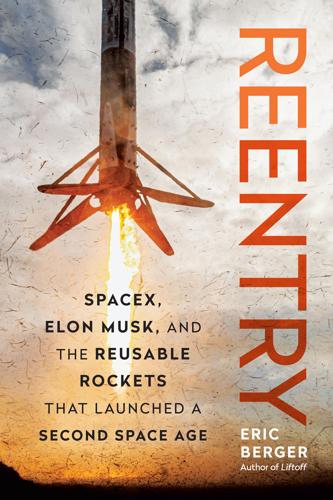
Reentry: SpaceX, Elon Musk, and the Reusable Rockets That Launched a Second Space Age
by
Eric Berger
Published 23 Sep 2024
“Do the X,” he declared in a classic, one-line email to Kellie. He also supplied a name for the barge: Just Read the Instructions, after the sentient starship in the Culture series of science fiction novels by Iain M. Banks. As 2014 ended, it became clear the drone ship would soon be called into service. After fits and starts with landing attempts, SpaceX engineers began to have enough confidence to try hitting the “X” on a drone ship. With its fourteenth overall Falcon 9 launch, a Dragon cargo delivery mission planned for early January, SpaceX therefore would try landing at sea. Kellie believed Just Read the Instructions was about as ready as it was going to be for handling dive-bombing rockets.
…
In order to achieve effective reusability, you really need an ocean landing.” Returning rockets to the launch site would simply cost too much fuel. The answer SpaceX settled on was the automated drone ship. It seems pretty mad, but with sophisticated avionics onboard the rocket, the company’s engineers believed the ship could pitch and roll as much as 5 or 6 degrees on the sea and still support a landing. The drone ship would need to hold to an absolute position at sea based on GPS data, with an accuracy of three feet or less. The task for SpaceX engineers therefore was this: launch a rocket to the edge of space traveling thousands of miles an hour, slow it down, and plop it down on a rolling target at sea about the size of a basketball court.
…
However, stormy weather and twenty-three-foot waves precluded a drone ship landing attempt. Even so, the rocket made a vertical landing into the ocean within about thirty feet of the targeted area, indicating SpaceX had solved the hydraulic issue. In between landing attempts, Kellie and the rest of the rocket recovery crew game-planned what they would do if they actually snagged a rocket. The strategy they settled on was, to put it mildly, slightly hazardous. The rocket would land and then dump its extra fuel directly onto the deck of the drone ship. If there was an excess of fuel, as anticipated, the deck would be sprayed with water cannons.
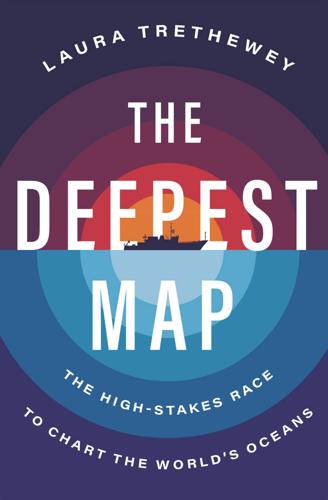
The Deepest Map
by
Laura Trethewey
Published 15 May 2023
,” Hydro International, August 17, 2021, https://www.hydro-international.com/content/article/who-is-going-to-map-the-high-seas. 3.Scott Sistek, “Saildrone’s Journey into Category 4 Hurricane Uncovers Clue into Rapidly Intensifying Storms,” Fox News Network (Fox Weather, December 16, 2021), https://www.foxweather.com/weather-news/saildrones.-journey-into-category-4-hurricane-uncovers-clue-into-rapidly-intensifying-storms. 4.Dongxiao Zhang et al., “Comparing Air-Sea Flux Measurements from a New Unmanned Surface Vehicle and Proven Platforms During the SPURS-2 Field Campaign,” Oceanography 32, no. 2 (June 2019): 122–33, https://doi.org/10.5670/oceanog.2019.220. 5.Susan Ryan, “Saildrone Closes $100 Million Series C Funding Round to Advance Ocean Intelligence Products,” Saildrone, October 18, 2021, https://www.saildrone.com/press-release/saildrone-announces-series-c-funding. 6.

Elon Musk: A Mission to Save the World
by
Anna Crowley Redding
Published 1 Jul 2019
Regular testing was underway. How could you bring a rocket back to Earth, slow it down, and land it upright? SpaceX would also need a way to land over water. Elon’s answer to that was a drone ship, a remote-controlled landing pad. SpaceX needed two. The Atlantic would be covered by a drone ship named Just Read the Instructions and the Pacific by Of Course I Still Love You. Just Read the Instructions drone ship. (© SpaceX.) But to even set down a rocket safely on land, well, one SpaceX commentator described the problem like this: “Launching a pencil over the Empire State Building, having it reverse, come back down and land on a shoebox on the ground during a windstorm.”131 Oh, just that.
…
Fast Company, 25 April 2018. www.fastcompany.com/40562660/during-puerto-ricos-blackout-solar-microgrids-kept-the-lights-on. Queen’s University. “Quick Facts.” www.queensu.ca/about/quickfacts. Ralph, Eric. “Elon Musk Reveals SpaceX’s New Scifi-Inspired Drone Ship—A Shortfall of Gravitas.” Teslarati, 12 Feb. 2018. www.teslarati.com/spacex-new-drone-ship-a-shortfall-of-gravitas/. Ressi, Adeo. “About.” www.adeoressi.com/index.php/about/. Rive, Lyndon. Interview by Brian Dumaine. “SolarCity’s Burning Man Roots.” Fortune, 9 Oct. 2014. Video, 1:15. fortune.com/video/2014/10/09/solarcitys-burning-man-roots/. _____.
…
Banks, a science fiction novel published in 1988, part of his Culture series. This book is set in a world that happens to have high-speed vacuum trains, human and machine symbiosis … oh, and two spaceships named Of Course I Still Love You and Just Read the Instructions. In 2018, Elon announced that a third drone ship under construction would be called A Shortfall of Gravitas, also inspired by the Culture series. STICK THE LANDING MONDAY, DECEMBER 21, 2015 8:29 p.m. (EST) Cape Canaveral, Florida. SpaceX Cape Canaveral Launch Control. (© SpaceX.) T minus twenty seconds. Under a clear night sky at Launch Complex 40, the control room’s countdown commands blared from loudspeakers.
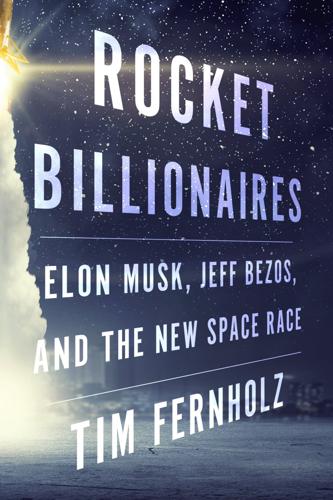
Rocket Billionaires: Elon Musk, Jeff Bezos, and the New Space Race
by
Tim Fernholz
Published 20 Mar 2018
In January and March of 2016, the company attempted to land two more boosters on the drone ships. The first, a comparatively easy flight to low earth orbit, almost went swimmingly, but one of the landing legs came unlocked and the rocket slowly tipped over. The second flight was returning from a high-velocity mission to sling a satellite toward a high orbit; that rocket smacked into the ship with punishing force. Each time, the reusability team learned more about their vehicle, playing with different ways to balance engine thrust and maneuverability while conserving propellant. Finally, in April 2016, SpaceX landed a booster on a drone ship following a mission to the International Space Station for NASA.
…
“All systems continue to be go,” a SpaceX engineer told observers. While the second stage coasted through space, the first stage met the atmosphere again. It was aiming for a drone ship, and its engines ignited again to slow its descent. On the video stream, viewers could see one of the grid fins burst into flames, and small pieces breaking off. As the booster plunged through the clouds, condensation covered the camera. Would the flames compromise the rocket’s ability to return to the drone ship, Of Course I Still Love You, waiting a few hundred miles out in the Atlantic Ocean? The camera on the vessel cut out as the rocket approached.
…
The first two landing attempts resulted in spectacular explosions. Each failure taught the SpaceX team a little more about how the landing systems worked, and improved the computer algorithms guiding the rocket. During the previous mission, two months before, the rocket had landed—actually landed, standing upright—on the floating drone ship. But it was unbalanced, and observers watched the live video feed in dismay as it tipped over with agonizing slowness. The remaining propellant ignited spectacularly. SpaceX’s numerous fans loved the show and cheered the company’s chutzpah; NASA executives cringed. This time around, Musk thought, they’d get it right.
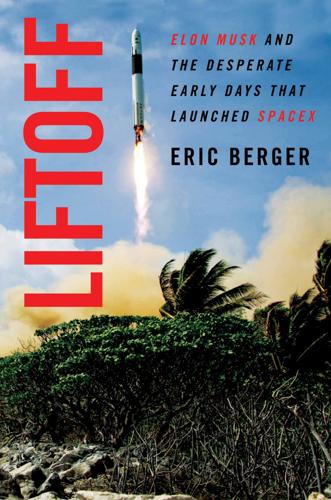
Liftoff: Elon Musk and the Desperate Early Days That Launched SpaceX
by
Eric Berger
Published 2 Mar 2021
Most notably, this problem occurred during the inaugural flight of the Falcon Heavy rocket in 2018, when there was not enough ignition fluid to light the outer two engines after several three-engine relights. The result of not relighting to make a landing burn? The center core missed its drone ship target by about the length of an American football field, slamming into the ocean at a speed of 300 m.p.h. The drone ship sustained minor damage. The rocket sleeps with the fishes. In McGregor, after the ignition tests, the team was ready to turn on the rocket engine for real, although this process came with a series of staged tests as well. First, there would be a little bit of flame, then a partial power test, then a short, full-power test before, finally, a full-power, full-duration test.
…
Only it’s rather hard to land a rocket on a boat that is bobbing up and down in the ocean. It requires some damn good computer programming to make the rocket and autonomous drone ship line up just right, and no one had ever done it before. Until it happened. On April 8, 2016, a Falcon 9 rocket launched a Thai communications satellite toward a high orbit around the Earth, and then, as if it were a magical being, the first stage landed on a drone ship playfully named Of Course I Still Love You. It was one of the most jaw-dropping things I have ever seen. For the first time in my life, I felt as though I had seen something as cool as my parents had witnessed during the Apollo Moon landing in 1969.
…
“I wasn’t at all confident that we would succeed, but I’m really glad of it,” he said that night. “It’s been thirteen years since SpaceX was started. We’ve had a lot of close calls. I think people here are overjoyed.” Prior to landing along the Florida coast, SpaceX had experimented extensively with putting boosters down on an automated drone ship stationed offshore in the Atlantic Ocean, downrange from the launch site. This is simple physics. Shortly after a rocket takes off, it leans forward, gradually moving from a vertical position with respect to the ground into a horizontal posture, setting up for an orbital insertion. The net effect of this is that by the time it separates from the second stage, the first stage is happily zooming away from the launch site at a very high speed.

The Pentagon's Brain: An Uncensored History of DARPA, America's Top-Secret Military Research Agency
by
Annie Jacobsen
Published 14 Sep 2015
These two reports, roughly three hundred pages in total, made clear that Pentagon drones were positioned to lead the way forward over the next twenty-five years of war. DARPA’s vast weapon systems of the future will involve an entire army of drones. They will include unmanned aerial vehicles (UAV), unmanned ground systems (UGS), unmanned surface vehicles (USV), unmanned maritime systems (UMS), and unmanned aircraft systems (UAS), weapons that reach from the depths of the ocean into outer space. At present and in the future, the Pentagon’s drones will fly, swim, crawl, walk, run, and swarm as they conduct missions around the globe. Some of these drones will be cyborgs, or what DARPA calls “biohybrids,” which are part animal and part machine.

Excession
by
Iain M. Banks
Published 14 Jan 2011
~ Feel free to ask the Ethics Gradient what prompted its suggestion, it added. ~ Thank you. ~ You're welcome. ~ I'd like to try contacting the Excession. This might be where our comrade disappeared. At the least it might have some infor-mation. At most, and for all we know, our ship is still in there. I want to talk to it, maybe send a drone-ship in if it doesn't reply. ~ Madness. This thing is welded into the grids, both directions. Know anything that can do that? Me neither. I'm not even going tostart feeling safe until there's a fleet of GSVs round here. Heck, I was pleased to see you there; Company at last, I thought. Somebody to pass the time with while I sit out my lonely vigil.
…
'We never really got on,' he told her. 'Mostly my fault, I suppose.' He turned his head to look at her. 'I can be a scum-bag sometimes, frankly.' He grinned. 'I'll take your word for it,' she said, climbing back on top of him. 10. Heavy Messing I Grief, nothing worked! TheFate Amenable To Change's ordnance directed at the Elench drone ship just disappeared, snatched away to nowhere; it had to react quickly to deal with the collapsing wormholes as they slammed back, now endless, towards its Displacers. How could anythingdo that? (And had the watching Elench warships noticed?) The little Elench drone flew on, a few seconds away from its home ship. ~ I confess I just tried to destroy your drone, theFate sent to theAppeal To Reason. ~ I make no apologies.

The Smartphone Society
by
Nicole Aschoff
Despite all the mystique surrounding deep learning and the dark web, our pop culture dystopias reveal a society well on its way to articulating a clear critique of what we don’t like about the Silicon Valley vision of the future.29 Our clarity is in part linked to the peculiar fact that many Silicon Valley visions about what technology should look like, and what our aspirations regarding technology should be, were originally located in science fiction. Star Trek fans say the smartphone is the real-life incarnation of the tricorder. Elon Musk, the tech entrepreneur who founded Tesla, named his two spaceport drone ships Just Read The Instructions and Of Course I Still Love You in tribute to the “Culture” novels by the science fiction great Iain M. Banks. Many classic speculative fiction stories—for instance, The Winter Market, by William Gibson, and Ubik, by Phillip K. Dick—also provide vivid depictions of the dystopian future technology would or at least could bring.

The Dark Cloud: How the Digital World Is Costing the Earth
by
Guillaume Pitron
Published 14 Jun 2023
recalls an activist from the French non-profit Agir pour l’environnement.14 Monégasque companies stand to reap the most tangible rewards of this new generation of mobile network. As Martin Péronnet explains, 5G is much easier to install than fibre, and its lower latency opens a world of remote-controllable objects and infrastructure — drones, ships, hospitals, vehicles. Ultra-high-speed digital technology will ignite the economy of the country already nicknamed ‘the smart principality’: ‘A wide array of sectors will be able to use 5G: energy, health, media, transport, manufacturing’, says a French government report.15 A greater capacity to handle more copious volumes of data could also, on a global scale, optimise road traffic and electricity-distribution systems, and make for more autonomous robots in the future factories of the fourth, ultra-connected, industrial revolution.
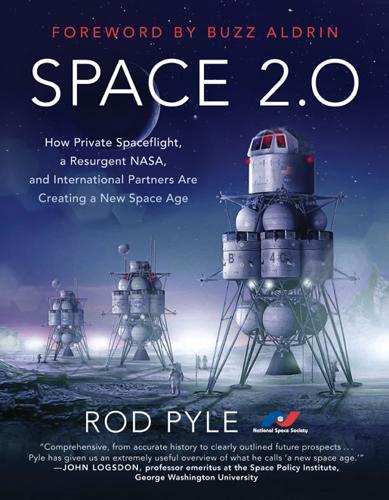
Space 2.0
by
Rod Pyle
Published 2 Jan 2019
The first stage boosts the rocket before releasing the second stage, which separates, ignites, and continues its journey into low Earth orbit or geosynchronous orbit, depending on the customer and its needs. Then, in most flights, the booster reverses direction and fires its engines to slow itself and head home, either back to the launch site or to a robotic drone ship. (The exceptions are flights where all the available fuel is needed for a heavy payload or high orbit, in which case the booster is treated as an expendable launcher, breaking up as it returns to Earth—just like competitors’ rockets.) To return in one piece, the booster must slow from almost 3,000 miles per hour to head back toward Earth.

Inventing the Future: Postcapitalism and a World Without Work
by
Nick Srnicek
and
Alex Williams
Published 1 Oct 2015
Finally, its flexibility is a significant advance, overcoming the traditional costs associated with revamping fixed investment for new production lines. 27.Businesses will easily be the quickest adopters of this technology, since it can achieve significant cost savings. Governments and public services (such as the automated overground railways already in London) are likely to be the second wave of adopters. Eventually, with legal and insurance changes, consumers will be forced into adopting this technology. 28.Isaac Arnsdorf, ‘Rolls-Royce Drone Ships Challenge $375 Billion Industry: Freight’, Bloomberg, 25 February 2014, at bloomberg.com; BBC News, ‘Amazon Testing Drones for Deliveries’, BBC News, 2 December 2013; Danielle Kucera, ‘Amazon Acquires Kiva Systems in Second-Biggest Takeover’, Bloomberg, 19 March 2012, at bloomberg.com; Vicky Validakis, ‘Rio’s Driverless Trucks Move 100 Million Tonnes’, Mining Australia, 24 April 2013, at miningaustralia.com.au; Elise Hu, ‘The Fast-Food Restaurants that Require Few Human Workers’, NPR.org, 29 August 2013, at npr.org; Christopher Steiner, Automate This: How Algorithms Came to Rule Our World (New York: Portfolio/Penguin, 2012); Mark Levinson, The Box: How the Shipping Container Made the World Smaller and the World Economy Bigger (Princeton, NJ: Princeton University Press, 2008); Daniel Beunza, Donald MacKenzie, Yuval Millo and Juan Pablo Pardo-Guerra, Impersonal Efficiency and the Dangers of a Fully Automated Securities Exchange (London: Foresight, 2011). 29.For a slightly outdated but still useful summary of various automation processes, see Ramin Ramtin, Capitalism and Automation: Revolution in Technology and Capitalist Breakdown (London: Pluto, 1991), Chapter 4. 30.Erik Brynjolfsson and Andrew McAfee, The Second Machine Age: Work, Progress, and Prosperity in a Time of Brilliant Technologies (New York: W.

Insane Mode: How Elon Musk's Tesla Sparked an Electric Revolution to End the Age of Oil
by
Hamish McKenzie
Published 30 Sep 2017
Bigelow Aerospace, maker of the Bigelow Expandable Activity Module—an inflatable space habitat better known by the acronym BEAM—had set up headquarters just down the road in North Las Vegas. Three days prior to Faraday’s factory groundbreaking, SpaceX’s Dragon spacecraft had delivered a BEAM to the International Space Station. The Falcon rocket that sent the BEAM into orbit subsequently landed itself back on an autonomous drone ship in the Atlantic Ocean. Following Reckhorn, Sandoval stepped up to honor his new tenants. “A little over a year ago, none of us could have conceived or imagined this,” said the square-jawed former judge, taking in the surroundings. “This doesn’t happen in other states, I promise you that.” Just over the horizon was a reminder of why it was so important for Sandoval to attract industry and jobs to the area.

Nomad Century: How Climate Migration Will Reshape Our World
by
Gaia Vince
Published 22 Aug 2022
Glaciologist Michael Wolovick of Princeton University has suggested that some Greenland or Antarctic glaciers could be potentially stabilized with the use of an artificial sill – a kind of mound on the ocean floor, perhaps constructed out of sand or rocks – that would block warm ocean water from seeping beneath the ice and melting it from the bottom up. Another idea is to brighten low-altitude clouds above these important polar glaciers by spraying them with droplets of salt water, using a fleet of remotely operated drone ships, thus helping them to shade the ice and reduce its temperature. The former UK Chief Scientific Adviser Sir David King is spearheading a project that hopes to try this in 2024. The same cloud-brightening idea could also protect coral reefs from bleaching in hot temperatures. Scientists have carried out a trial above the Great Barrier Reef, using a modified turbine with 100 high-pressure nozzles to spray hundreds of trillions of nano-sized ocean-salt crystals into the air per second, from the back of a barge.

How to Spend a Trillion Dollars
by
Rowan Hooper
Published 15 Jan 2020
That will require the development of some system able to deliver an ultra-fine spray of seawater into the lower atmosphere (the marine boundary layer) over a large area. Stephen Salter, an engineer at the University of Edinburgh, has well-advanced plans for this, having worked on proposals for remotely operated drone ships able to deliver the spray.16 I got in touch with Salter and, after we’d had a few back and forths, he sent me a photo of Neymar, the football star. Along with the attachment Salter had written simply: ‘Here is a picture of a happy young man.’ The photo showed Neymar in 2017, beaming as his transfer to Paris Saint-Germain was announced, which had cost the French club £198 million.

The Space Barons: Elon Musk, Jeff Bezos, and the Quest to Colonize the Cosmos
by
Christian Davenport
Published 20 Mar 2018
There was only a 1 percent possibility of calling off the launch because of weather. The drama leading up to the flight wasn’t the launch, but the landing. Or rather, the landing attempt. For months, SpaceX had been practicing an unprecedented maneuver, flying its first stages back to land on what it called its “autonomous spaceport drone ship.” Although each of the previous two attempts had ended in fireballs—“rapid unscheduled diassamblies”—the company was getting very close. On both tries, the rocket had actually hit the ship, an incredible achievement considering the booster had to fly back to Earth after screaming into space. But each time, something had gone wrong at the last minute, giving the company enough material for a fiery blooper reel.

Genius Makers: The Mavericks Who Brought A. I. To Google, Facebook, and the World
by
Cade Metz
Published 15 Mar 2021
Jaan Tallinn had seeded the Future of Life Institute with a pledge of $100,000 a year. In Puerto Rico, Musk pledged $10 million, earmarked for projects that explored AI safety. But as he prepared to announce this new gift, he had second thoughts, fearing the news would detract from an upcoming launch of a SpaceX rocket and its landing on a drone ship in the Pacific Ocean. Someone reminded him there were no reporters at the conference and that the attendees were under Chatham House Rules, meaning they’d agreed not to reveal what was said in Puerto Rico, but he was still wary. So he made the announcement without mentioning the dollar figure. A few days later, after his rocket crashed during its attempted landing, he revealed the $10 million grant in a tweet.
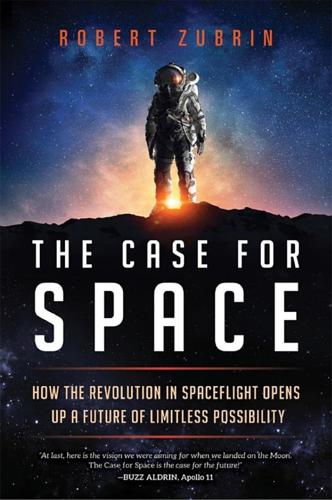
The Case for Space: How the Revolution in Spaceflight Opens Up a Future of Limitless Possibility
by
Robert Zubrin
Published 30 Apr 2019
On February 6, 2018, the SpaceX Falcon Heavy rocket took flight, demonstrating a capacity to lift sixty tons to low Earth orbit and playfully sending a Tesla Roadster on a trajectory that took it beyond the orbit of Mars. To add to the coup, two of the Falcon's three booster stages flew back to land gracefully together at the Cape, while the third barely missed pulling off a recovery landing on a drone ship stationed downrange. (See plates 1, 2, and 3 in the photo insert.) To understand how extraordinary this accomplishment was, let us recall that in 2009, the Obama administration's blue-ribbon review committee, headed by former Lockheed Martin CEO Norm Augustine, declared that NASA's moon program had to be canceled because the development of the necessary heavy-lift booster would take twelve years and $36 billion.

Amazon Unbound: Jeff Bezos and the Invention of a Global Empire
by
Brad Stone
Published 10 May 2021
CHAPTER 11: GRADATIM FEROCITER Two books were valuable resources for this chapter: Christian Davenport, The Space Barons: Elon Musk, Jeff Bezos, and the Quest to Colonize the Cosmos (New York: PublicAffairs, 2018), and Tim Fernholz, Rocket Billionaires: Elon Musk, Jeff Bezos, and the New Space Race (New York: Houghton Mifflin Harcourt, 2018). the firm landed a Falcon 9 booster: Loren Grush, “SpaceX Successfully Lands Its Rocket on a Floating Drone Ship for the First Time,” The Verge, April 8, 2016, https://www.theverge.com/2016/4/8/11392138/spacex-landing-success-falcon-9-rocket-barge-at-sea (January 24, 2021). “a club more than a company”: Steven Levy, “Jeff Bezos Wants Us All to Leave Earth—for Good,” Wired, October 15, 2018, https://www.wired.com/story/jeff-bezos-blue-origin/ (January 24, 2021).

Future Crimes: Everything Is Connected, Everyone Is Vulnerable and What We Can Do About It
by
Marc Goodman
Published 24 Feb 2015
Ferdaus shared his plans with his al-Qaeda affiliates, who offered enthusiastic support and funding for his efforts. Using a fake name and cover story, Ferdaus ordered three of the model airplanes costing $3,000 each from different online sources. He paid for them with a PayPal account he had created under an alias and had the drones shipped to a storage facility in nearby Framingham that he had rented, paying cash. There Ferdaus began covertly assembling the devices before moving on to the second phase of his project, the acquisition of the explosives. For this goal, his new friends in al-Qaeda proved extremely helpful. They provided him with twenty-five pounds of C-4 explosives, numerous hand grenades, and six fully automatic AK-47 assault rifles, which he hid in his ten-by-ten storage locker.